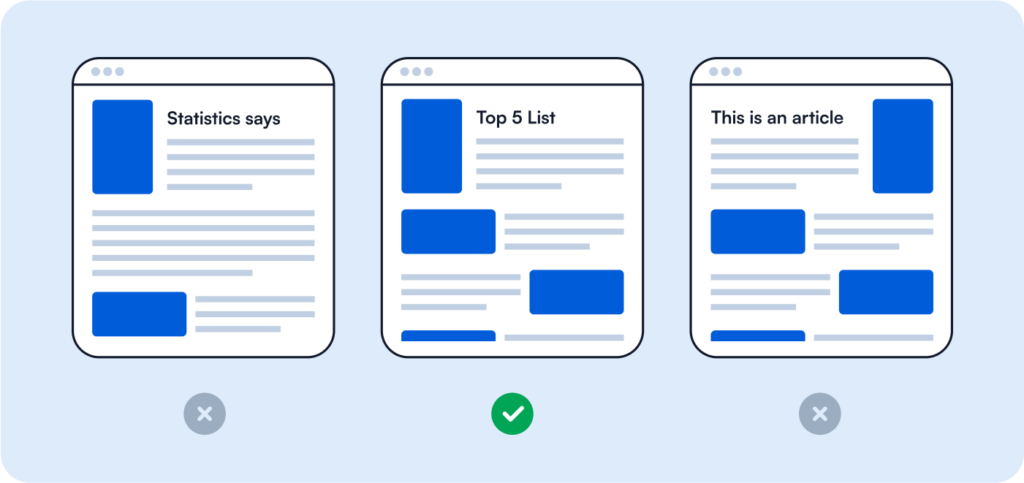SearchEye Launches Pro Membership
Flat Price Mentions, Digital PR, Exclusive Opportunities, access to 5,000+ opportunities.
Discover the best practices on how to structure the perfect blog post. Learn how to write content for maximum reader engagement and SEO success.

Writing is an art. Each writer brings a unique style when crafting their blogs. However, a blog’s structure can significantly impact its performance on search engines and its ability to engage readers. Across the internet, there are over 600 million active blogs, with two million produced daily and used in marketing. As such, it’s imperative to write one that stands out.
The publishers we collaborate with have varying degrees of selectiveness. But our overarching aim is to deliver uniform excellence across the board for every client. Our primary focus is crafting content that provides real value rather than merely serving as a vessel for client links.
Think about it: Your goal is to develop content that’s truly useful to the readers, not just a webpage with links. With that in mind, here’s how you should structure your blog post:

Your title or main headline will guide readers through what they can expect once they click on your article. It should have the primary keyword and promise value that is too good to pass up. A well-crafted title sets the stage for both SEO success and reader intrigue.
However, in an era when clickbait has become common, your priority should be setting the right expectations with your title. Crafting genuine titles is also about establishing trust and ensuring your content delivers its promises.
Avoid sensationalizing or exaggerating the benefits or insights provided in your post. If your title promises “10 Revolutionary Tips to Transform Your Writing,” ensure that your content truly delivers on that revolutionary promise.
Knowing what your audience is seeking can help you craft titles that resonate without resorting to clickbait tactics. Use language and themes that speak directly to their interests, challenges, or questions.
Your title should hint at the value readers will gain by engaging with your content, but always aim to deliver more than you promise. This over-delivery can take many forms, including additional insights, tips not mentioned in the title, and downloadable resources.
Feel free to experiment with different title formats and styles to see what resonates best. Use analytics to monitor engagement and adjust your approach based on actual data. Testing and refining your titles over time can help you discover the perfect balance between attractiveness and authenticity.

Grab your readers’ attention from the get-go. Use the introduction to empathize with your audience, present a relatable problem, or pose a question. It sets the tone, establishes expectations, and decides whether your audience will stay engaged or leave the page. This is your opportunity to hook readers and give them a taste of the value awaiting them.
Think about it as making a lasting impression. Like in real life, you only have about seven seconds to leave that first impression. So you have to make it count and make it worthwhile.
Crafting the main body of an article is where your storytelling skills shine, blending informative content with engaging narrative.
Here are best practices to ensure your article’s main body is both informative and reader-friendly:




An effective conclusion is key to leaving a lasting impression on your readers. It should wrap up your article cohesively, reinforce your main points, and encourage further thought or action. Here’s how to craft a conclusion that resonates:

Here are the best practices to elevate your blog writing and ensure your posts stand out:
Keep paragraphs short. Aim for two to three sentences per paragraph to make your post easier to scan. Use bullet points or numbered lists. They’re great for summarizing information or illustrating steps in a process. It’s also good to mix short and long sentences to keep the rhythm of your writing engaging.
Do keyword research, and make sure to use these keywords naturally. Add relevant keywords in the title, headings, and content without overdoing it. Remember to optimize meta descriptions and title tags: Write meta descriptions and title tags that include your primary keyword to improve search engine visibility.
Add internal links, but make sure they’re relevant to your content. This motivates visitors to delve deeper, aiding website indexing and enhancing SEO performance.
Always review your work. Check for clarity, grammar, and spelling errors. Editing tools like Grammarly can be helpful. Have someone else review your post to catch mistakes you might have missed.

Leverage social media. Let your audience know about your recent post. When you receive a comment, take time to reply to show appreciation and build a community around your blog.
Standing out from the crowd demands a strategic approach to ensure your posts gain the visibility and authority they deserve. One effective method to achieve this is by leveraging SearchEye’s Marketplace. Our platform offers a unique opportunity to enhance your content’s reach and significantly boost its position in search engine rankings. With our high-quality links and mentions through SearchEye, you’re increasing traffic to your site and establishing a stronger online presence.
With a solid foundation for crafting the perfect blog posts, it’s time to take your content strategy further with SearchEye. Explore our tools and marketplace to boost your content’s reach and engagement. Let’s work together to reshape your digital footprint and achieve measurable results.
With SearchEye, optimizing your blog posts for search engines and engaging readers becomes not just a goal but a reality. With us, every post is a step towards success.
Flat Price Mentions, Digital PR, Exclusive Opportunities, access to 5,000+ opportunities.
Writing is an art. Each writer brings a unique style when crafting their blogs. However, a blog’s structure can significantly. [Read more]
Search engine optimization (SEO) efforts require a combination of different internal adjustments and external connections and collaboration. Coordinating a successful. [Read more]
Content creation and management have grown exponentially in the past years. With the advent of AI in content generation, it’s. [Read more]
